
What are soffit lights?
The soffit is the underside of a roof or ceiling. There’s a wide range of soffit lights, from flood lights that are more security-oriented to spot lights that are better for highlights, and even recessed lights, which provide good general lighting of an area. We specialize in outdoor LED track lighting that replicates the traditional soffit lighting look that can change colors to match any holiday year-round.
What are can lights/recessed lights?
A popular type of soffit lighting is can lights, also known as recessed lighting. Recessed lighting takes up no actual space on the overhang, meaning it’s completely discrete until you hit the switch! We also tried to replicate this by making the track the lights are in small and match the same color of the trim.
The light is placed inside a housing (a cylindrical can made of metal or plastic) that is placed into a hole in the ceiling. All the electrical wiring and the bulb itself are up in the ceiling. The edge of the can is rimmed with a trim, which is the part of the light fixture that you’ll actually see. There is a range of trims you can choose from, some purely practical, some just decorative, and some are both. The trim allows you to match your can lights to the aesthetic of your home.
LED can lights are a very practical way to light up a porch, garden, or wall. Can lights can be spaced out evenly across the ceiling or roof, providing clear, strong lighting for the entire yard. This makes them perfect in spaces where bright, even lighting is needed. LED bulbs will last longer than incandescents and are much more energy efficient. You will save money and time by using LEDs for your lights.

What are the best bulbs to use for soffit lighting?
The best light bulbs to use for your soffit lighting are LED lights. LEDs are far more efficient than other bulbs. They convert more of the energy used to power them into light instead of generating heat. More of the power they use is actually useful as a light, and makes LED bulbs cool to the touch. The risk of fire is significantly lowered, and since they don’t waste as much energy, they can run for much longer without burning out.
LED lights are also quickly turned on and off faster than other lights. While some lights will flicker for a second when turned on and dim down when turned off, LEDs will snap on and off quickly. LED lights also work better in the cold, making them perfect for outdoor lights. Most lights will slowly lose performance if they are turned on and off quickly, or if they are used in cold temperatures. LED lights will actually work better in both conditions.
Since LEDs can operate for years longer than other bulbs, if you replace all your lights with LEDs, you’ll spend much less time and money on replacing the bulbs. LED bulbs are a bit more expensive than incandescents, but the money you’ll save overall is 100% worth it. Soffit lights can be tricky to replace, and using LEDs will ensure that you don’t have to do it often.

Can soffit lighting be used outside?
Soffit lighting is great for outdoor lighting. It’s a very popular way of lighting porches and walls for both ambient lighting and security lighting. The downlighting highlights the walls and lights the yard well, making soffit lighting perfect for outdoor lights.
There are several outdoor soffit ideas you can pull from for inspiration. Flood lights provide a lot of lighting, and are especially good for security lighting. Spotlights are similar to flood lights, but have a tighter angle, giving a more concentrated beam of brighter light. Recessed soffit lights are perfect for both indoor and outdoor lighting, and while they don’t provide as direct a beam as spotlights, they still light up the area well.
Soffit lights don’t have to be just for security and general lighting. You can get colored LED bulbs, or even ones that can change color, to make a more fun lighting display, especially for holidays and special occasions. Soffit lights are also great for spotlighting certain features of your house and yard that you want to highlight.
Now, on to security lighting. Is it worth it? Effective security lighting will deter potential robbers and vandals from your home, making it easier to see those who are trying to stop them before they get it. A house that’s dark at night is easier to rob and harder for you to see them beforehand and call the police. Having security lighting makes it easier for you to stop potential burglaries and makes it harder to sneak into. A good security system, including security lights, will raise your property value, should you ever decide to sell your home.
There are several ways you can light up your home for security. A popular one is motion sensor lighting. This will save energy as the lights won’t be on all the time, and will draw more attention when they are alerted by something or someone in your yard. Automatic timer lights will turn on at a certain time each night, so you don’t have to worry about remembering to turn them on and off. Floodlights are a popular soffit light style for security because they have a wide beam and light up a big area.
How much does it cost to install soffit lights?
Soffit lights can cost anywhere between $200 and $400 per light, depending on the quality of the lights, the quality of the service, and how hard it is to install them in your home. Installing soffit lights in a structure that is already built will also cost much more. Remodel soffit lights require more work to ensure that the housing is properly insulated and energy won’t escape through your house’s insulation.
That’s why we’ve created discrete track lighting to compete with traditional soffit lights. Our system comes on quickly and uses an energy-efficient track that’s the same color as your house.

Uplighting versus downlighting—and when to use each
Uplighting and downlighting are just what they sound like. Uplighting refers to lights placed low on the ground or floor that are directed upwards. Downlights are installed in the ceiling or roof, and are directed downwards. Both have pros and cons, so where should you use them to the best advantage?
Uplights are best for landscape lighting. They are often used to highlight features of your property, like trees, statues, or fountains. An uplight fixture placed at the base of a tree will highlight the branches well and make the tree more visible to the people standing under it. Uplights can also be used to light the side of the house, although they may cast strange shadows on the wall. But for highlighting parts of your property, you may want to consider an uplighting alternative to downlights.
Downlighting is great for both indoor and outdoor lighting. Recessed lighting can provide clear, even lighting to a room or hallway. Soffit lighting also works great for outdoor lighting to light up porches, yards, and roofs.
Should I use soffit lighting in my home?
We know soffit lights are great outdoors, but what about inside?
Although soffit lighting is only for a home’s exterior, you can use similar lighting techniques inside your home. In rooms where you want strong lighting—like a hallway, kitchen, or closet—recessed lights are perfect.
How can JellyFish Lighting help me?
JellyFish Lighting installs permanent light displays on your home. Our remote-controlled, color-changing LED track lights last for years on your home, and allow you to coordinate for any occasion. You can adjust your lights for security, accents, holidays, game days, birthdays, and any other occasion!
And they’re permanent. Once our lights are in, there will be no more climbing up and down shaky ladders every season!
Contact JellyFish Lighting today for a free estimate on your house and start planning your unique lighting display!
What are soffit lights?
The soffit is the underside of a roof or ceiling. There’s a wide range of soffit lights, from flood lights that are more security-oriented to spot lights that are better for highlights, and even recessed lights, which provide good general lighting of an area. We specialize in outdoor LED track lighting that replicates the traditional soffit lighting look that can change colors to match any holiday year-round.
What are can lights/recessed lights?
A popular type of soffit lighting is can lights, also known as recessed lighting. Recessed lighting takes up no actual space on the overhang, meaning it’s completely discrete until you hit the switch! We also tried to replicate this by making the track the lights are in small and match the same color of the trim.
The light is placed inside a housing (a cylindrical can made of metal or plastic) that is placed into a hole in the ceiling. All the electrical wiring and the bulb itself are up in the ceiling. The edge of the can is rimmed with a trim, which is the part of the light fixture that you’ll actually see. There is a range of trims you can choose from, some purely practical, some just decorative, and some are both. The trim allows you to match your can lights to the aesthetic of your home.
LED can lights are a very practical way to light up a porch, garden, or wall. Can lights can be spaced out evenly across the ceiling or roof, providing clear, strong lighting for the entire yard. This makes them perfect in spaces where bright, even lighting is needed. LED bulbs will last longer than incandescents and are much more energy efficient. You will save money and time by using LEDs for your lights.

What are the best bulbs to use for soffit lighting?
The best light bulbs to use for your soffit lighting are LED lights. LEDs are far more efficient than other bulbs. They convert more of the energy used to power them into light instead of generating heat. More of the power they use is actually useful as a light, and makes LED bulbs cool to the touch. The risk of fire is significantly lowered, and since they don’t waste as much energy, they can run for much longer without burning out.
LED lights are also quickly turned on and off faster than other lights. While some lights will flicker for a second when turned on and dim down when turned off, LEDs will snap on and off quickly. LED lights also work better in the cold, making them perfect for outdoor lights. Most lights will slowly lose performance if they are turned on and off quickly, or if they are used in cold temperatures. LED lights will actually work better in both conditions.
Since LEDs can operate for years longer than other bulbs, if you replace all your lights with LEDs, you’ll spend much less time and money on replacing the bulbs. LED bulbs are a bit more expensive than incandescents, but the money you’ll save overall is 100% worth it. Soffit lights can be tricky to replace, and using LEDs will ensure that you don’t have to do it often.

Can soffit lighting be used outside?
Soffit lighting is great for outdoor lighting. It’s a very popular way of lighting porches and walls for both ambient lighting and security lighting. The downlighting highlights the walls and lights the yard well, making soffit lighting perfect for outdoor lights.
There are several outdoor soffit ideas you can pull from for inspiration. Flood lights provide a lot of lighting, and are especially good for security lighting. Spotlights are similar to flood lights, but have a tighter angle, giving a more concentrated beam of brighter light. Recessed soffit lights are perfect for both indoor and outdoor lighting, and while they don’t provide as direct a beam as spotlights, they still light up the area well.
Soffit lights don’t have to be just for security and general lighting. You can get colored LED bulbs, or even ones that can change color, to make a more fun lighting display, especially for holidays and special occasions. Soffit lights are also great for spotlighting certain features of your house and yard that you want to highlight.
Now, on to security lighting. Is it worth it? Effective security lighting will deter potential robbers and vandals from your home, making it easier to see those who are trying to stop them before they get it. A house that’s dark at night is easier to rob and harder for you to see them beforehand and call the police. Having security lighting makes it easier for you to stop potential burglaries and makes it harder to sneak into. A good security system, including security lights, will raise your property value, should you ever decide to sell your home.
There are several ways you can light up your home for security. A popular one is motion sensor lighting. This will save energy as the lights won’t be on all the time, and will draw more attention when they are alerted by something or someone in your yard. Automatic timer lights will turn on at a certain time each night, so you don’t have to worry about remembering to turn them on and off. Floodlights are a popular soffit light style for security because they have a wide beam and light up a big area.
How much does it cost to install soffit lights?
Soffit lights can cost anywhere between $200 and $400 per light, depending on the quality of the lights, the quality of the service, and how hard it is to install them in your home. Installing soffit lights in a structure that is already built will also cost much more. Remodel soffit lights require more work to ensure that the housing is properly insulated and energy won’t escape through your house’s insulation.
That’s why we’ve created discrete track lighting to compete with traditional soffit lights. Our system comes on quickly and uses an energy-efficient track that’s the same color as your house.

Uplighting versus downlighting—and when to use each
Uplighting and downlighting are just what they sound like. Uplighting refers to lights placed low on the ground or floor that are directed upwards. Downlights are installed in the ceiling or roof, and are directed downwards. Both have pros and cons, so where should you use them to the best advantage?
Uplights are best for landscape lighting. They are often used to highlight features of your property, like trees, statues, or fountains. An uplight fixture placed at the base of a tree will highlight the branches well and make the tree more visible to the people standing under it. Uplights can also be used to light the side of the house, although they may cast strange shadows on the wall. But for highlighting parts of your property, you may want to consider an uplighting alternative to downlights.
Downlighting is great for both indoor and outdoor lighting. Recessed lighting can provide clear, even lighting to a room or hallway. Soffit lighting also works great for outdoor lighting to light up porches, yards, and roofs.
Should I use soffit lighting in my home?
We know soffit lights are great outdoors, but what about inside?
Although soffit lighting is only for a home’s exterior, you can use similar lighting techniques inside your home. In rooms where you want strong lighting—like a hallway, kitchen, or closet—recessed lights are perfect.
How can JellyFish Lighting help me?
JellyFish Lighting installs permanent light displays on your home. Our remote-controlled, color-changing LED track lights last for years on your home, and allow you to coordinate for any occasion. You can adjust your lights for security, accents, holidays, game days, birthdays, and any other occasion!
And they’re permanent. Once our lights are in, there will be no more climbing up and down shaky ladders every season!
Contact JellyFish Lighting today for a free estimate on your house and start planning your unique lighting display!
What are soffit lights?
The soffit is the underside of a roof or ceiling. There’s a wide range of soffit lights, from flood lights that are more security-oriented to spot lights that are better for highlights, and even recessed lights, which provide good general lighting of an area. We specialize in outdoor LED track lighting that replicates the traditional soffit lighting look that can change colors to match any holiday year-round.
What are can lights/recessed lights?
A popular type of soffit lighting is can lights, also known as recessed lighting. Recessed lighting takes up no actual space on the overhang, meaning it’s completely discrete until you hit the switch! We also tried to replicate this by making the track the lights are in small and match the same color of the trim.
The light is placed inside a housing (a cylindrical can made of metal or plastic) that is placed into a hole in the ceiling. All the electrical wiring and the bulb itself are up in the ceiling. The edge of the can is rimmed with a trim, which is the part of the light fixture that you’ll actually see. There is a range of trims you can choose from, some purely practical, some just decorative, and some are both. The trim allows you to match your can lights to the aesthetic of your home.
LED can lights are a very practical way to light up a porch, garden, or wall. Can lights can be spaced out evenly across the ceiling or roof, providing clear, strong lighting for the entire yard. This makes them perfect in spaces where bright, even lighting is needed. LED bulbs will last longer than incandescents and are much more energy efficient. You will save money and time by using LEDs for your lights.

What are the best bulbs to use for soffit lighting?
The best light bulbs to use for your soffit lighting are LED lights. LEDs are far more efficient than other bulbs. They convert more of the energy used to power them into light instead of generating heat. More of the power they use is actually useful as a light, and makes LED bulbs cool to the touch. The risk of fire is significantly lowered, and since they don’t waste as much energy, they can run for much longer without burning out.
LED lights are also quickly turned on and off faster than other lights. While some lights will flicker for a second when turned on and dim down when turned off, LEDs will snap on and off quickly. LED lights also work better in the cold, making them perfect for outdoor lights. Most lights will slowly lose performance if they are turned on and off quickly, or if they are used in cold temperatures. LED lights will actually work better in both conditions.
Since LEDs can operate for years longer than other bulbs, if you replace all your lights with LEDs, you’ll spend much less time and money on replacing the bulbs. LED bulbs are a bit more expensive than incandescents, but the money you’ll save overall is 100% worth it. Soffit lights can be tricky to replace, and using LEDs will ensure that you don’t have to do it often.

Can soffit lighting be used outside?
Soffit lighting is great for outdoor lighting. It’s a very popular way of lighting porches and walls for both ambient lighting and security lighting. The downlighting highlights the walls and lights the yard well, making soffit lighting perfect for outdoor lights.
There are several outdoor soffit ideas you can pull from for inspiration. Flood lights provide a lot of lighting, and are especially good for security lighting. Spotlights are similar to flood lights, but have a tighter angle, giving a more concentrated beam of brighter light. Recessed soffit lights are perfect for both indoor and outdoor lighting, and while they don’t provide as direct a beam as spotlights, they still light up the area well.
Soffit lights don’t have to be just for security and general lighting. You can get colored LED bulbs, or even ones that can change color, to make a more fun lighting display, especially for holidays and special occasions. Soffit lights are also great for spotlighting certain features of your house and yard that you want to highlight.
Now, on to security lighting. Is it worth it? Effective security lighting will deter potential robbers and vandals from your home, making it easier to see those who are trying to stop them before they get it. A house that’s dark at night is easier to rob and harder for you to see them beforehand and call the police. Having security lighting makes it easier for you to stop potential burglaries and makes it harder to sneak into. A good security system, including security lights, will raise your property value, should you ever decide to sell your home.
There are several ways you can light up your home for security. A popular one is motion sensor lighting. This will save energy as the lights won’t be on all the time, and will draw more attention when they are alerted by something or someone in your yard. Automatic timer lights will turn on at a certain time each night, so you don’t have to worry about remembering to turn them on and off. Floodlights are a popular soffit light style for security because they have a wide beam and light up a big area.
How much does it cost to install soffit lights?
Soffit lights can cost anywhere between $200 and $400 per light, depending on the quality of the lights, the quality of the service, and how hard it is to install them in your home. Installing soffit lights in a structure that is already built will also cost much more. Remodel soffit lights require more work to ensure that the housing is properly insulated and energy won’t escape through your house’s insulation.
That’s why we’ve created discrete track lighting to compete with traditional soffit lights. Our system comes on quickly and uses an energy-efficient track that’s the same color as your house.

Uplighting versus downlighting—and when to use each
Uplighting and downlighting are just what they sound like. Uplighting refers to lights placed low on the ground or floor that are directed upwards. Downlights are installed in the ceiling or roof, and are directed downwards. Both have pros and cons, so where should you use them to the best advantage?
Uplights are best for landscape lighting. They are often used to highlight features of your property, like trees, statues, or fountains. An uplight fixture placed at the base of a tree will highlight the branches well and make the tree more visible to the people standing under it. Uplights can also be used to light the side of the house, although they may cast strange shadows on the wall. But for highlighting parts of your property, you may want to consider an uplighting alternative to downlights.
Downlighting is great for both indoor and outdoor lighting. Recessed lighting can provide clear, even lighting to a room or hallway. Soffit lighting also works great for outdoor lighting to light up porches, yards, and roofs.
Should I use soffit lighting in my home?
We know soffit lights are great outdoors, but what about inside?
Although soffit lighting is only for a home’s exterior, you can use similar lighting techniques inside your home. In rooms where you want strong lighting—like a hallway, kitchen, or closet—recessed lights are perfect.
How can JellyFish Lighting help me?
JellyFish Lighting installs permanent light displays on your home. Our remote-controlled, color-changing LED track lights last for years on your home, and allow you to coordinate for any occasion. You can adjust your lights for security, accents, holidays, game days, birthdays, and any other occasion!
And they’re permanent. Once our lights are in, there will be no more climbing up and down shaky ladders every season!
Contact JellyFish Lighting today for a free estimate on your house and start planning your unique lighting display!
How much do permanent christmas lights cost?
How much do permanent christmas lights cost?
How much do permanent christmas lights cost?






Are Permanent Christmas Lights Worth It?
Are Permanent Christmas Lights Worth It?
Are Permanent Christmas Lights Worth It?
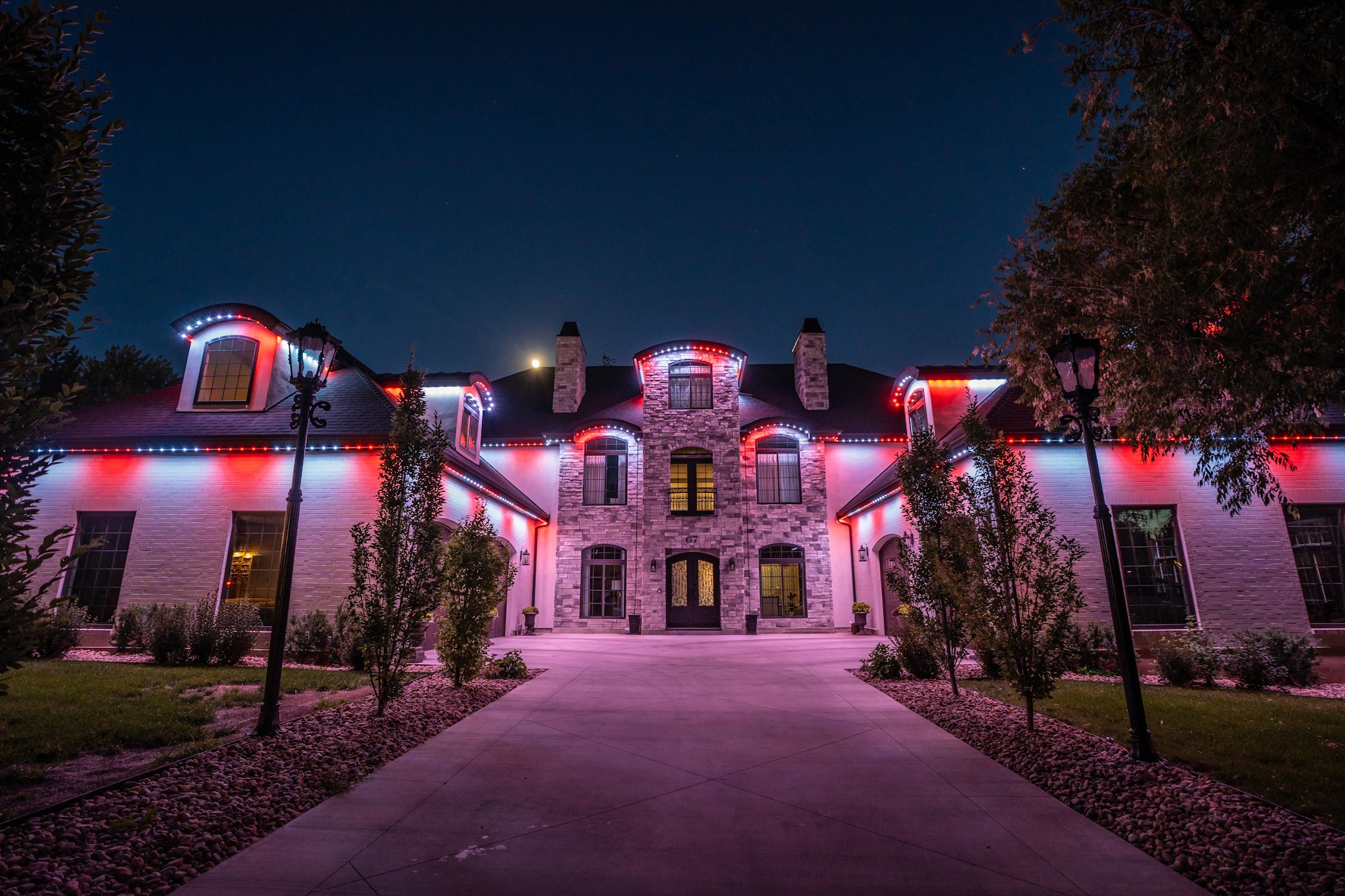





Illuminate Your Love Story: Transforming Wedding Venues with JellyFish Lighting
Illuminate Your Love Story: Transforming Wedding Venues with JellyFish Lighting
Illuminate Your Love Story: Transforming Wedding Venues with JellyFish Lighting
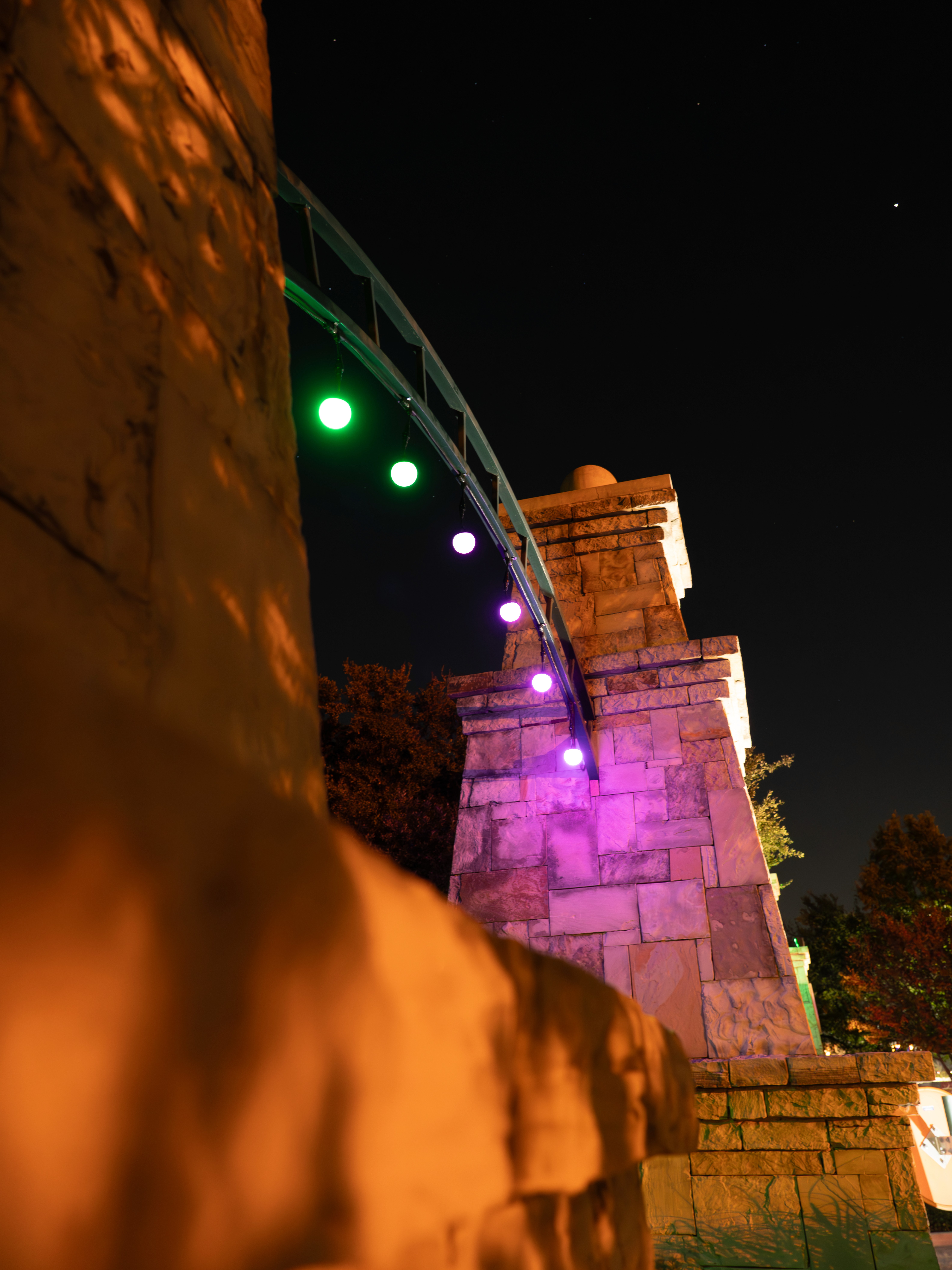





Illuminating Thrills: How JellyFish Lighting Enhances Amusement Park Experiences
Illuminating Thrills: How JellyFish Lighting Enhances Amusement Park Experiences
Illuminating Thrills: How JellyFish Lighting Enhances Amusement Park Experiences
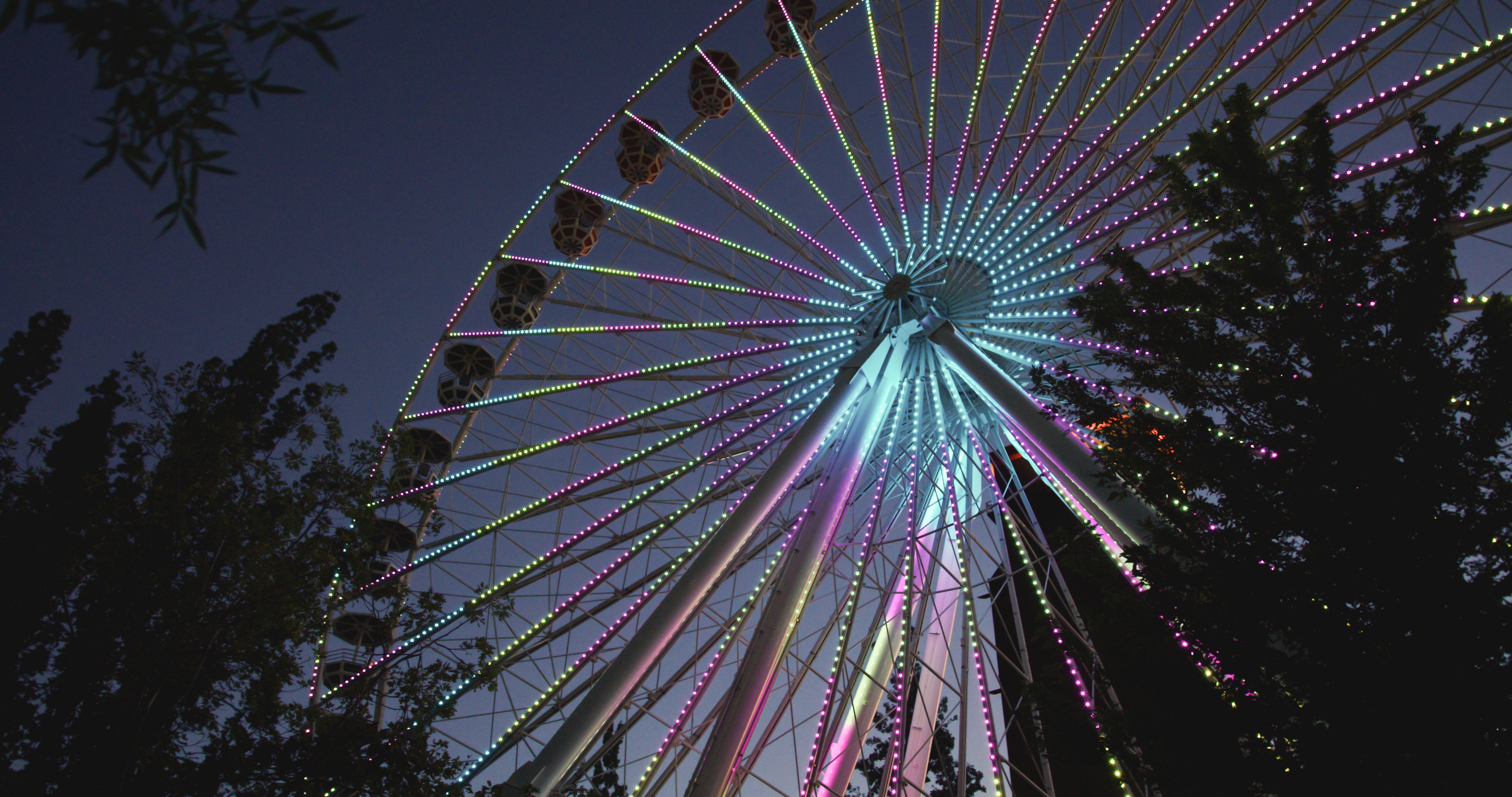





Announcing JellyFish Cloud 2.0
Announcing JellyFish Cloud 2.0
Announcing JellyFish Cloud 2.0
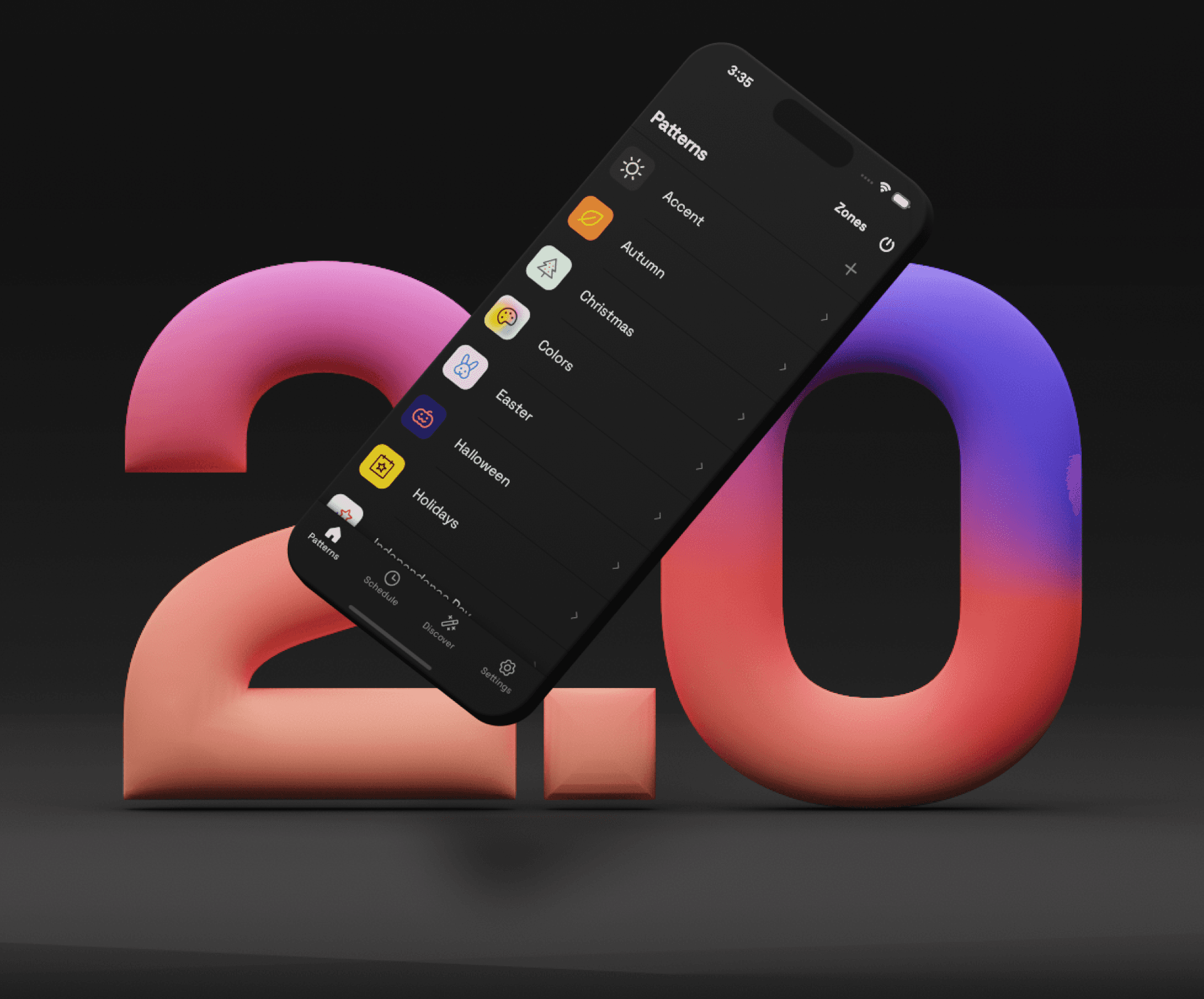





How do Soffit Lights compare to Permanent LED Holiday Lighting?
How do Soffit Lights compare to Permanent LED Holiday Lighting?
How do Soffit Lights compare to Permanent LED Holiday Lighting?
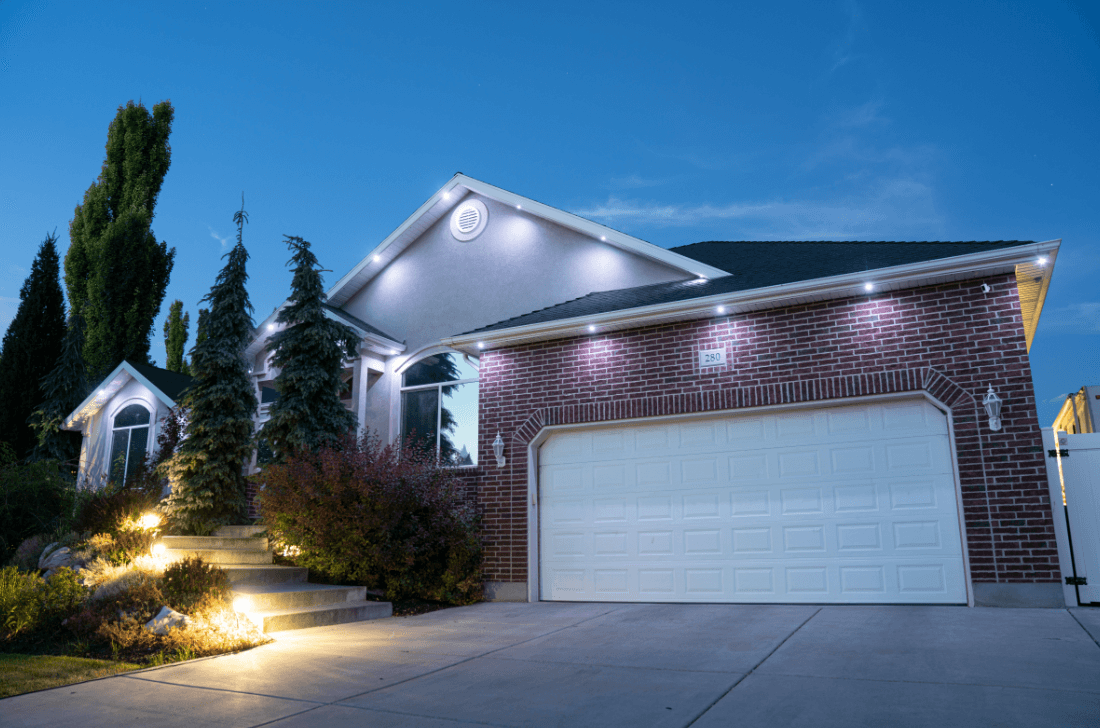





Brighten Home Life With The Right House Lights
Brighten Home Life With The Right House Lights
Brighten Home Life With The Right House Lights
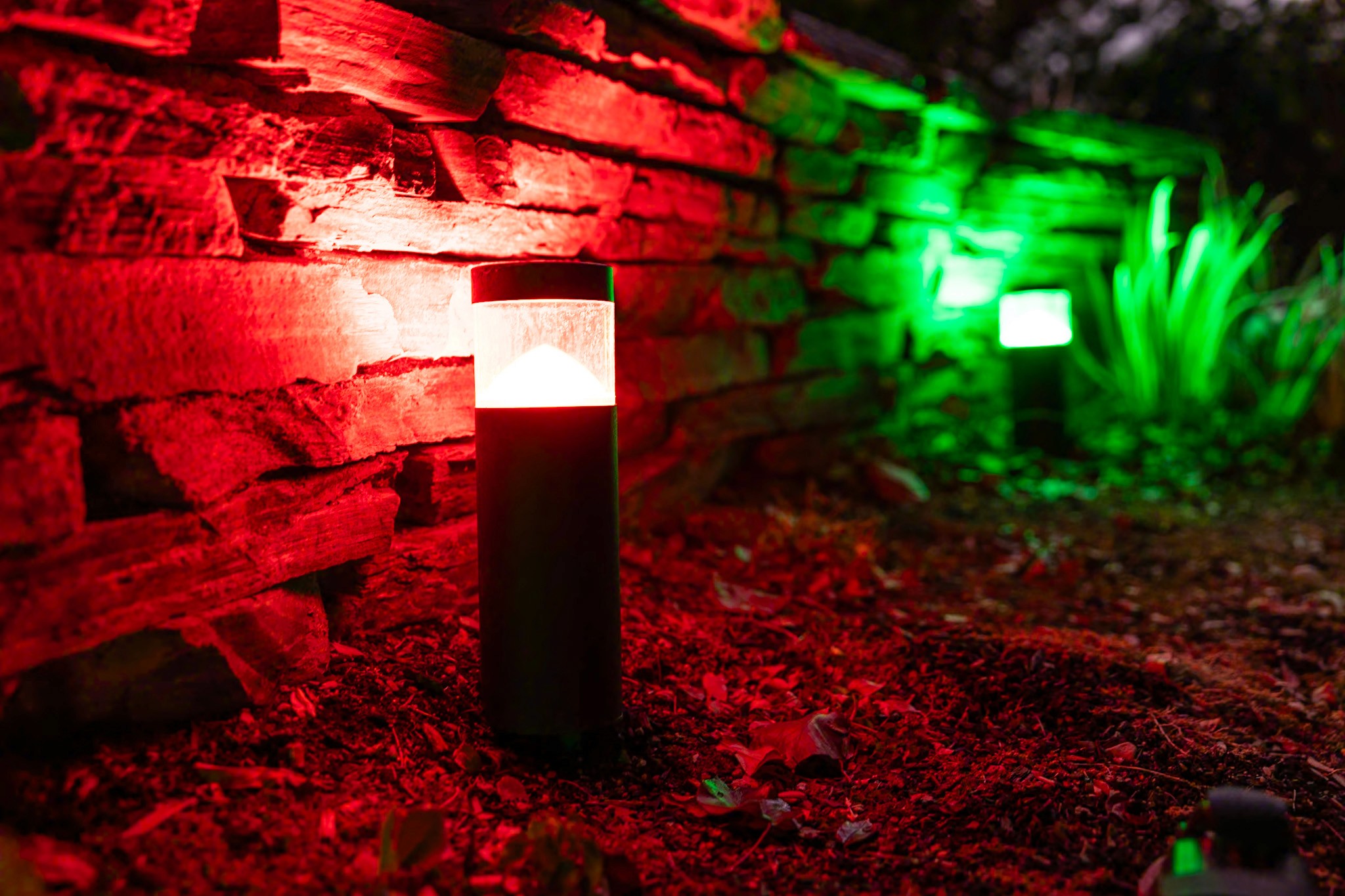





The Benefits of Outdoor Landscape Lighting
The Benefits of Outdoor Landscape Lighting
The Benefits of Outdoor Landscape Lighting
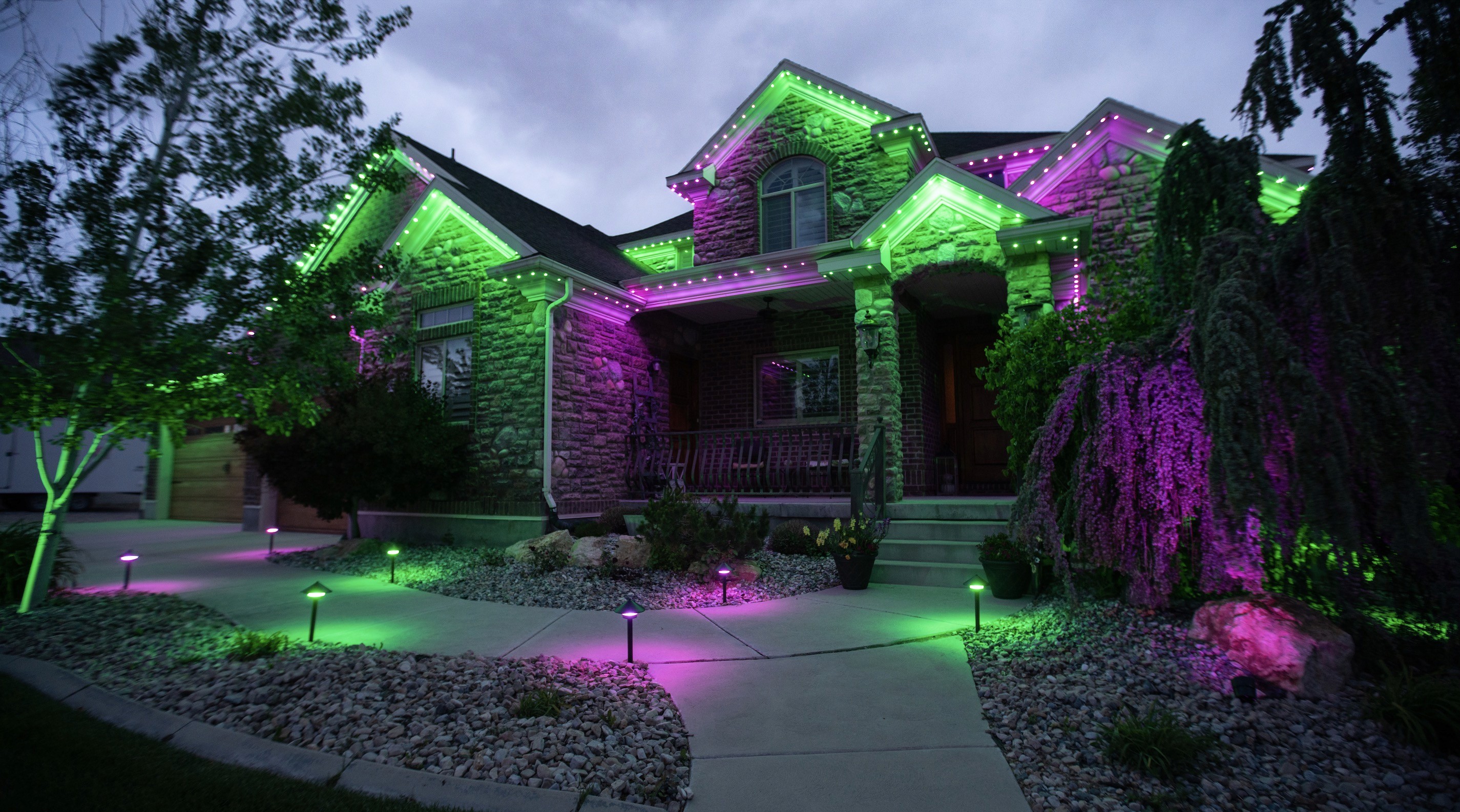





Get color-changing permanent Christmas lights today
© 2025 JellyFish Lighting · All rights reserved · Patent #9506609
Get color-changing permanent Christmas lights today
© 2025 JellyFish Lighting · Patent #950660
Get color-changing permanent Christmas lights today
© 2025 JellyFish Lighting · All rights reserved · Patent #9506609